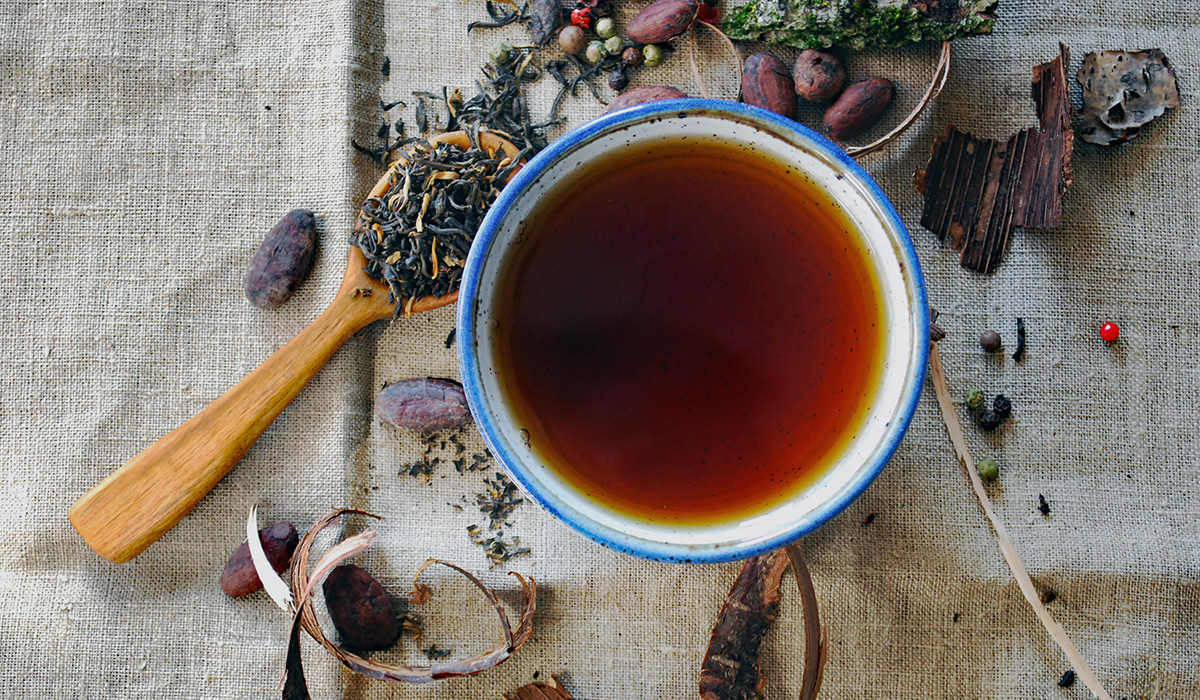Exploring the Origins of Oolong Tea
Embark on a journey to discover the essence of oolong tea, a timeless beverage with roots in the breathtaking Fujian Province of China. While the exact origins of oolong production remain shrouded in mystery, it is believed to have emerged after the Ming Dynasty. The Fujian Province, renowned for its compressed teas, paved the way for the birth of oolong. Derived from the Chinese term “Wulong,” meaning “black dragon,” the name “oolong” evokes the intriguing image of dark, twisted leaves found in the Wuyi Mountain region. In the early 1800s, the introduction of tea plants from Fujian to Taiwan further expanded the cultivation and appreciation of oolong tea.
Delving into the Diverse World of Oolong Varieties
Prepare to be captivated by the vast and diverse range of oolong tea varieties, each offering a unique sensory experience. With oxidation levels ranging from as low as 8% to as high as 80%, oolong reveals its versatility and complexity. While an exhaustive list of oolong varieties is virtually impossible, let us delve into a select few that serve as perfect introductions for oolong enthusiasts.
Chinese Oolongs:
- Tie Guan Yin
- Da Hong Pao
- Mi Lan Xiang
Taiwanese Oolongs:
- Dong Ding
- Oriental Beauty
- Ali Shan
But the Oolong journey doesn’t end there. Other regions, such as Vietnam, Thailand, and beyond, have also embraced oolong production, presenting a plethora of tantalizing options that promise delightful and distinct flavors.
The Artistry of Oolong Tea Processing
Oolong tea undergoes a meticulous processing method that sets it apart from other tea types, such as white, yellow, or green teas. Contrary to the misconception that larger leaves signify inferior quality, oolong demonstrates that larger, more mature leaves yield exceptional flavors. Delicate tea buds, unable to withstand the rolling process, necessitate oolong harvests to occur later in the year.
The intricate process begins with plucked leaves undergoing withering under the gentle warmth of the sun, allowing excess moisture to dissipate and rendering the leaves pliable. Careful tossing on bamboo or wicker trays initiates the oxidation process, gradually transforming the vibrant green leaves into a rich shade of red. At the optimal stage, heat application halts oxidation, preventing the tea from reaching full oxidation and becoming black tea.
The shaping and rolling of oolong leaves vary depending on the tea type. Anxi and Taiwanese oolongs are typically formed into distinct ball shapes, while Wuyi and Guangdong oolongs boast slender and elongated appearances. To enhance shelf stability and eliminate residual moisture, the leaves undergo heating, often achieved through the use of charcoal roasting. Some oolong varieties may also undergo additional roasting performed by tea merchants, adding yet another layer of complexity to the tea’s profile.
Unveiling the Flavors of Oolong
The broad range of oxidation levels gives rise to a captivating tapestry of flavors in oolong tea. Lightly oxidized oolongs offer a refreshing and grassy quality, while Anxi and Taiwanese oolongs are enchanted with their aromatic and floral characteristics, harboring a wealth of nuanced subtleties. On the other hand, Wuyi oolongs captivate with their dark, toasty flavors and distinctive mineral notes. Phoenix oolongs, with their remarkable versatility, mimic a plethora of flavors, from luscious fruits to delectable nuts, and even specific floral varieties, offering an unparalleled tasting adventure.
Mastering the Art of Brewing Oolong
When it comes to brewing oolong tea, different methods yield distinct and delightful results. For those following the Western approach, water temperatures typically range between 180 to 212°F (82 to 100°C). The steeping time varies depending on the specific oolong tea, typically falling between 3 to 8 minutes. However, measuring oolong tea can be a challenge due to the unique shapes of its leaves. To ensure a perfect brew, it is recommended to weigh the leaves, aiming for 2 to 2.5 grams per 8oz cup of water.
For tea enthusiasts seeking an elevated brewing experience, Gongfu, a traditional Chinese tea brewing technique, presents an ideal method for oolong tea. Utilizing Yixing clay or thick-walled teapots enhances heat retention, allowing the tea’s enticing aromas to fully infuse into the brew. Another excellent option is the use of Gaiwans, which offer greater control over the brewing process through the lid. Gongfu brewing requires water temperatures ranging from approximately 195 to 212°F (90 to 100°C), with steeping times ranging from 15 to 30 seconds, ensuring a concentrated and nuanced flavor profile.
Share Your Enchanting Oolong Tea Journey
Now that you have explored the captivating realm of oolong tea, we invite you to share your favorite oolong experiences. In the comments below, let us know your preferred oolong tea variety and the captivating flavors it unveils. Together, let’s continue to celebrate and embark on the enchanting journey of oolong tea!



Leave a Reply
You must be logged in to post a comment.